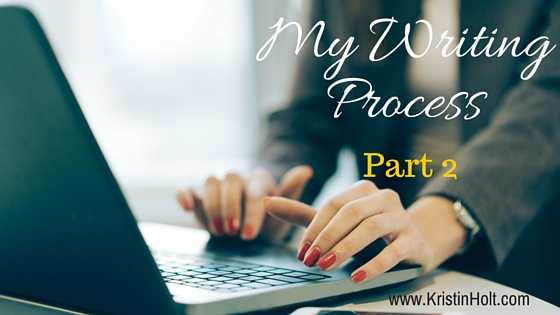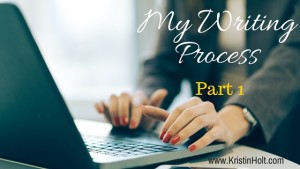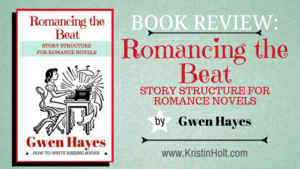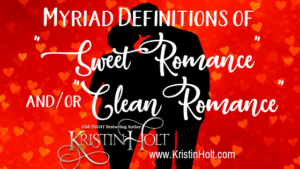My Writing Process, Part 2
My Writing Process, Part 2
.
.
Rough Draft, Second Draft, Beta Readers, Apply Suggestions, Format & Publish, Independent Publishing
.
Note: Yesterday’s post, My Writing Process, Part 1 included: Branding, Software (Scrivener), Ideas are Everywhere, and 7-Point Story Structure. Please consider visiting that post, as today’s picks up where yesterday’s left off.
.
Rough Draft
Writing a first draft and reminding myself that I’m simply shoveling sand into a box so that later I can build castles. ~ Shannon Hale
.
Author Shannon Hale nailed that one on the head.
She and I must have a very similar view of rough drafts.
Rough drafts are a necessary part of the project. Rough by definition, and they’re supposed to be. Why would I spend hours and hours polishing my words, sentences, paragraphs, formatting–and more importantly, my scene and sequel structure when this content might not stay?
For me, a first draft is all about deciding what stays and what goes.
And there’s no way to determine that until I have a chance to see it in written form and let the characters show me where the story will go, how it will develop, and what becomes of my jumping-off-place (my 7-point structure outline).
Frankly, The Bride Lottery was easy to write (compared to other books of mine). It’s a prime example of how, for me, a simple, basic outline (without too many details. the 7-point structure) makes all the difference. I spent two or three hours figuring out the 7-Point Structure per Dan Wells’s method, and voila!– ready to power through the first draft.
I love it when a plan comes together.
Sometimes, I’ve been very surprised and not in a good way. Specifically, with Maybe This Christmas. Wow! now that one went nowhere near my original concept. Yet by the end of the (very lengthy) rewrite process, I was happy with the results.
Without that first draft, I never would have known what stays and what goes. I wouldn’t know where to spend my time. Getting it all down (digitally, in Scrivener) is the priority, and I give myself full permission to write what my original writing teachers referred to as Puke Green Dreck. Because it is. It’s seldom beautiful. It’s seldom perfect… OK, it’s never perfect.
But I can’t fix something that isn’t on paper.
As Shannon so eloquently put it, in my first draft, I’m shoveling sand into a box so I can later build castles.
.
Second Draft
.
When they asked Michelangelo how he made his statue of David he is reported to have said, “It is easy. You just chip away the stone that doesn’t look like David.” ~ Michelangelo
.
I understand what the incredibly talented, hard-working, highly skilled artist meant.
And I have zero delusions that I might be as creative as he, but I still try and apply his wisdom to my writing.
A second draft, to me, is about removing everything that doesn’t belong, and ensuring all the important stuff stays.
I doubt Michelangelo had Super Glue. But I have the relative ease of a word processing program designed for all kind of writers, and if I find something needed to stay, it’s easy to put it back.
Second drafts, for me, are a fluid process. I mark up my draft (Scrivener makes this easy with an Inline Annotation feature). I leave the equivalent of digital sticky notes for myself in the Project Notes or Document Notes field to address later. I attack the biggest problems first– a better starting place, a dropped character, the best circumstances/set-up for the ending. Why polish and manage every turn of phrase when I’m not sure the sentence/paragraph/scene will stay in the finished book? (Yes, I’m repeating myself; it’s something I have to remind myself of throughout the writing process because it’s a break with what I once did.)
Eventually– sometimes after three drafts, sometimes after even more– I’m ready to polish, refine, smooth out the rough places. I cannot imagine shaping marble with hand tools. I’ll stick with word smithing. Words make ever so much more sense to me.
I had it easy. Language classes in elementary school made sense. I remember asking my mother why it was simple to remember the correct usage of words (I believe we were studying noun-verb agreement) in sentence structure, when so many of the kids in my class found it difficult. She had a bit of wisdom to share with me that day: I’m a reader and I was blessed with literate parents who use the English language properly. I think it’s more than that– I think I lucked out. Language arts came easily to me and math did not. I kid you not, math is so not my thing. I can’t do mental math. Scoring weekly Pinochle games maxes out my capacity.
Because sentence structure, spelling, homophones and homonyms, and genesis of the language magically work with my brain, I work diligently to ensure I pass the cleanest copy possible to my beta readers. This is purposeful. Why would I waste their one true cold read, causing them to trip over misspellings, dropped words, and poor word choices, when what I need from them is to bring to my attention what I cannot see.
.
Beta Readers
.
Readers are plentiful: thinkers are rare. ~ Anthony Burgess
.
By the time I pass any book off to my beta readers, it’s as ready as I can make it. It’s clean, clear, concise. My very best work.
And every single time, my beta readers come back with suggestions.
This is precisely why I value their feedback and why I ask for it.
I need their capacity to see what I can no longer see. As the creator of my own little story world, I think something is there when it’s not (a dropped word or adequate character motivation or something else important).
Through the years, I’ve picked up new beta readers and said goodbye (for one reason or another, officially or unofficially) to others. This is perfectly OK. I’m asking for a lot. I’m asking them to read and give me their honest feedback and that’s sometimes hard to do.
I’ve lucked out, truly, and have developed lasting and precious relationships with other authors who are skilled, compassionate, and as vested in my success as anyone could possibly be. I know their hearts are in the right place and their feedback is designed to help. They read for me, I read for them, and we’ve developed the kind of trust in one another that is invaluable.
.
Apply Suggestions
True intuitive expertise is learned from prolonged experience with good feedback on mistakes. ~ Daniel Kahneman
.
I take every scrap of information into consideration. I revise. I rewrite. I cut, I write fresh stuff. Eventually, it’s as smooth and beautiful and complete as I can make it.
At this point, some Indie Authors pay an editor to work their magic. Editors are like a beta reader to the nth degree (I do understand that math term). Editors have the training, skill, talent, and capacity to find anything and everything standing in the way of a glossy, marketable product readers will gladly pay for and thoroughly enjoy reading.
I freely admit I don’t hire an editor.
Go ahead– gasp.
Shake a finger at me. Scold me for taking an unnecessary risk.
After all, every reader who scans reviews others have left on a book before making a purchase knows that readers have little to no patience with poorly edited work. Readers can and do leave honest reviews criticizing a book that so clearly needed a professional edit and the author skipped that critical, essential step.
So I’ll restate, with emphasis: I don’t hire an editor.
I didn’t say my books aren’t meticulously edited, because they are.
I edit my books.
And I take it seriously. I carefully devote the necessary time to ensure it’s as clean and error-free as possible.
Given how many definitely-wrong (not just a stylistic difference) errors I’ve found while beta reading for other authors, post-editor’s work, I have a humble confidence in my ability to find and correct the problems. My beta readers are skilled, capable, careful readers who don’t miss much.
So far, it’s a system that’s working.
Once the book is done, next comes the publishing part.
.
Format and Publish
.
Numerous professionals are in the business of assisting authors in formatting their work for publication, in eBook format(s) and for print.
I could go that route, of course. It’s my decision.
But I’ve found I enjoy the creative outlet. With each book I complete, format, and publish, the time invested becomes shorter as I finally know what I’m doing. Most newbie snags are behind me. Learning Scrivener and Photoshop Elements has empowered my ability to do more for myself. Formatting and preparation for publication feels like design work (because it’s so visual). Thus I do it myself.
.
Independent Publishing
.
Indie publishing lets me feed my inner control freak. ~ Michelle M. Pillow
.
I’ll do it myself.
That pretty much sums up my plan of action.
Years ago, I signed a contract with a well-known literary agent in New York. She was the agent of a good many authors of sweet western historical romances sold to Harlequin Historical, my target publishing house at that time. This agent believed my book would be an easy sell.
But the market was changing. Harlequin was making adjustments to their Historical line, and the “Gatekeepers That Be” said no.
They had all the power. And they didn’t want to let me through.
Thank goodness times have changed.
I’m proud to be an Indie Author.
Indie is short for Independent.
I’m a businesswoman, an artisan, a publisher. A one-woman show. I make the decisions, and if it turns out I chose poorly, the consequences are all my own.
I have the final decision about the content in my books. I chose my brand, my genre, my niche.
I’m responsible for copyright, blurbs, tag lines, and back cover copy.
I work with a cover artist to ensure the presentation represents my work the best it possibly can. I design and sew costumes for era-appropriate photo shoots–or I rent the costumes. I hire models. I pay the bill.
I study the craft. I attend conferences. I learn from every beta reader’s feedback. I study the market. It’s up to me to be well-informed, knowledgeable, and prepared.
I set the prices for my books. I market my titles. I promote them. And I pay the bill.
I hire an attorney when needed. And I pay the bill.
I developed my own author website, I update it, I ensure the content remains relevant. Or I pay some else to do it.
I format my books for Kindle and for other eBook retailers (sometimes) and I take pride in doing this task well. I create a presentation that is pleasing to the eye and gives the reader a pleasurable reading experience. Or I could pay the bill to have someone else do it.
I format my books for paperback. It’s time-consuming, rewarding work. I enjoy the creative outlet. Or I could pay a professional to do it for me.
I’m responsible for my own ISBNs. It’s one of the costs of doing business.
If the cover is not successful, I go back and rework it. The buck stops with me. And that means I pay for another round of cover art.
I take full and complete responsibility for the quality of my publications. I’m in this career for the long haul. Readers are the quality control as they leave honest reviews and their feedback guides my decisions going forward.
I’m an Indie Publisher.
I’m an Indie Author.
.
Related Articles
.
.
Updated April 2022
Copyright © 2014 Kristin Holt LC
My Writing Process, Part 2 My Writing Process, Part 2
















This is a perfect example of why I have come to love blogs. I love the insight to the authors. This is the best explanation I’ve seen of the process you go through to write the books I’m addicted to. Thank you Kristin!
You’re very welcome, Cindy! So glad you enjoyed it.